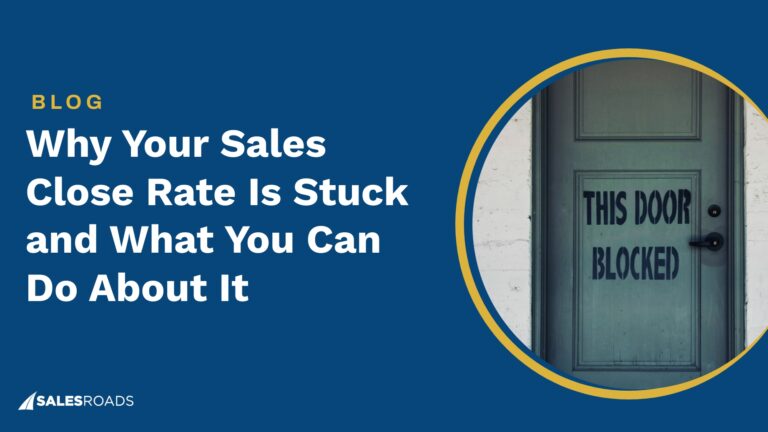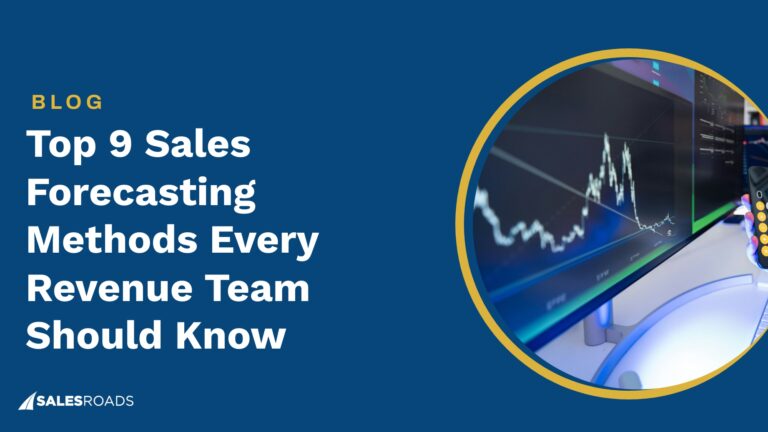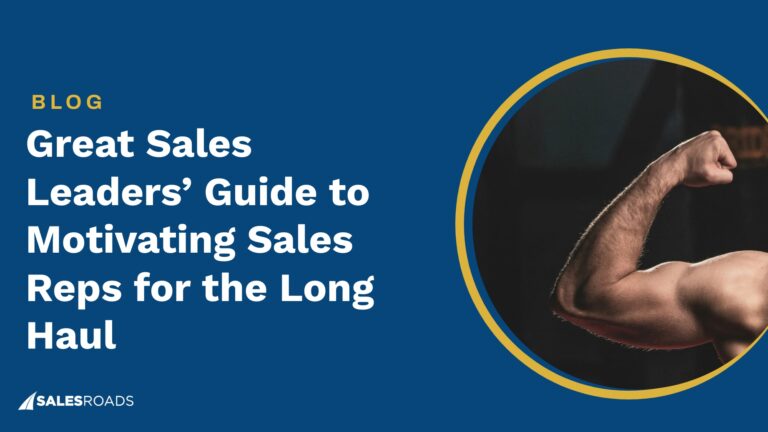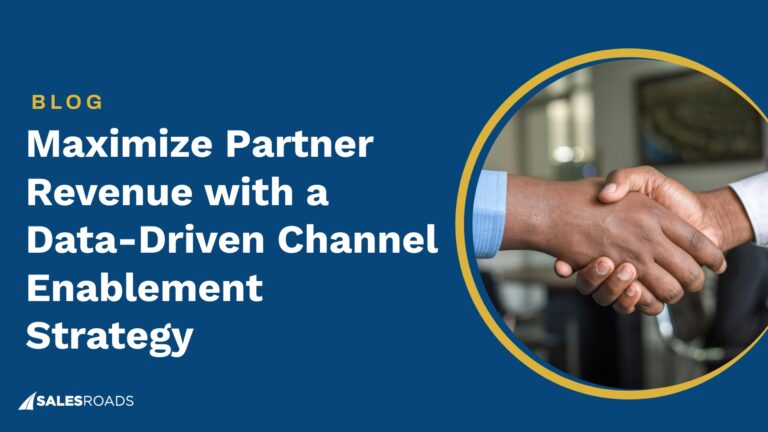Salespeople today face a more challenging environment than in previous years. Increased competition, multiple decision-makers, time constraints, buyers craving personalization, balancing AI and personal touch, longer sales cycles, social selling becoming essential…
These factors collectively contribute to the complexity and difficulty of sales in the modern business environment, making the role of sales development increasingly vital.
What is Sales Development?
Sales development is the process of identifying, engaging, and qualifying potential customers to prepare them for a purchase decision. This function serves as a critical link between marketing and sales efforts.
The primary goal of sales development is to refine the sales pipeline, ensuring that sales teams focus on leads with the highest likelihood of becoming customers. This increases both efficiency and the success rate of sales.
Sales reps typically spearhead this process, handling early-stage sales tasks like prospecting and lead qualification, and setting up meetings for the sales team to pursue the final stages of the sales cycle.
Businesses benefit from sales development in multiple ways:
- Bridging marketing and sales: Sales development is a crucial process that acts as the connective tissue between marketing and sales efforts. At its core, it focuses on identifying potential leads and effectively qualifying them, ensuring that sales teams target the right prospects. This approach not only streamlines the sales process but also significantly reduces the time wasted on low-quality leads.
- Enhanced lead qualification: Sales development sharpens the focus on qualifying leads, ensuring that the sales team dedicates its efforts to prospects most likely to make a purchase. This qualification process involves assessing leads against set criteria, such as need, budget, and decision-making authority, thereby streamlining the sales pipeline and improving overall efficiency.
- Shortened sales cycles: By focusing on well-qualified leads, sales development can significantly shorten the sales cycle. Prospects that have been thoroughly vetted and nurtured are more prepared for sales discussions, allowing for quicker progression through the sales funnel and faster closures.
- Increased sales efficiency: Sales development enables sales teams to concentrate on high-potential leads, reducing the time and resources spent on less promising prospects. This targeted approach allows sales professionals to use their skills and time more effectively, leading to better productivity and higher conversion rates.
- Scalable sales growth: With a dedicated focus on nurturing and qualifying leads, sales development enables businesses to scale their sales efforts more effectively. As the business grows, sales development adapts and expands its strategies to continue delivering a steady stream of qualified leads, supporting sustainable sales growth.
- Development of sales talent: The sales development function often serves as a training ground for nurturing future sales talent. SDRs gain crucial skills in communication, negotiation, and lead management, which are essential for more advanced sales roles. This investment in talent development can pay significant dividends as these individuals progress within the organization.
Sales development is often confused with business development, but they’re distinct practices. Sales development focuses on the early stages of the buyer’s journey and advancing leads, whereas business development uncovers strategic opportunities and market segments.
Let’s examine them side-by-side in the following table providing clear differentiation, and helping businesses to strategically align their goals and resources for each area:
| Business Development | Sales Development | |
| Focus | creating long-term value by identifying new opportunities, partnerships, and markets | generating and qualifying leads for the sales team |
| Strategies | forming partnerships, strategic relationships, and expanding through new channels, geographies, or customer segments | augmenting the most effective methods for identifying and qualifying potential leads |
| Goals | driving sustainable growth through diversification, new client acquisition strategies, and developing new avenues for revenue | streamlining the sales process, increasing the efficiency of the sales cycle, and boosting conversion rates |
| Measure of success | strategic milestones like successful partnerships, market expansion, and long-term revenue generation | measured by the number of qualified leads generated, the conversion rate of leads to sales, and the impact on the sales cycle length |
Understanding these differences is crucial for organizations to allocate resources effectively and tailor strategies that suit each area’s unique requirements and goals.
Sales Development Services
The core function of a sales development team is centered around appointment setting, a critical process in the sales cycle. This involves meticulously identifying high-quality leads and scheduling appointments for them with account executives.
The ultimate objective of appointment setting is to streamline the transition of these leads from initial interactions to direct sales engagements, where account executives can effectively close deals. This process is fundamental in ensuring a smooth and efficient sales pipeline.
Sales development services include:
Prospect research and list building
A poor-quality list can lead to misdirected efforts, lower conversion rates, and missed opportunities. That’s why a quality prospect list is vital in sales development.
Here are the critical components that constitute a quality list:
- Data points: Building a quality prospect list requires collecting specific and relevant data points for each prospect. This information should extend beyond basic contact details to include job titles, company sizes, industry sectors, and locations, providing a well-rounded view of each lead.
- Segmentation: Effective segmentation refines the list by categorizing prospects based on factors like their role, influence, and past interactions. This targeted approach ensures outreach efforts reach decision-makers and are tailored to resonate with each segment.
- Lead scoring: This involves ranking prospects based on their likelihood to convert, using criteria like engagement level, industry relevance, and buying stage. It helps prioritize leads, allowing sales teams to focus their efforts where they’re most likely to succeed.
- Manual verification: Regularly verifying the list ensures data accuracy. This includes confirming job titles, email addresses, and company information, keeping in mind the dynamic nature of professional roles.
- Regulations: Adhering to data protection and privacy laws is crucial. This involves understanding and complying with regulations like the CCPA, ensuring ethical handling of personal information, and avoiding legal repercussions.
Creating a quality prospect list is a complex and thoughtful endeavor. It involves developing a resource that empowers your sales team to connect with key decision-makers efficiently and effectively.
Outbound cold calling
Outbound cold calling is a sales development strategy where sales reps proactively contact leads who have been identified as potential prospects but have not yet engaged with the company.
Cold calling remains one of the most challenging sales development methods since it requires a deep understanding of customer psychology, exceptional communication skills, and the ability to quickly build rapport over the phone.
In today’s market, the challenges are amplified by increased competition and savvy consumers who are often inundated with sales pitches. Sales professionals face the daunting task of breaking through this noise to capture attention. This requires not only resilience in the face of frequent rejection but also the ability to quickly gauge a prospect’s interest and tailor the conversation accordingly.
The role of experienced sales reps steering these challenges in outbound cold calling cannot be overstated. These individuals bring a wealth of expertise in initiating conversations with potential leads, leveraging customer data to personalize calls, navigating objections, and identifying opportunities where others might see dead ends.
Outbound cold emailing
Similar to outbound cold calling, cold emailing is another sales strategy where sales reps send emails to potential customers who haven’t previously interacted with or expressed interest in your product or service.
The aim is to introduce these potential customers to your company’s offerings, generate interest, and ultimately convert them into customers.
The challenge of cold emailing lies in its requirement for precision, personalization, and relevance. It’s a delicate balance of being persuasive without being intrusive. It involves researching potential leads, understanding their needs, and crafting messages that resonate with their specific pain points or interests.
This process requires a keen understanding of market trends, customer behavior, and the subtleties of effective communication. Moreover, the skillful use of language, the timing of the emails, and the follow-up strategy are all crucial components that experienced professionals manage adeptly.
David Kreiger, President of SalesRoads, talks with Michael Maximoff about crafting cold email playbooks that drive success.
Should You Have a Sales Development Team?
A pivotal question emerges for businesses: Should you build an in-house sales development team, or is outsourcing this function a more strategic move? This decision is crucial, as it impacts not only your sales process but also shapes your organization’s overall growth trajectory.
In-house sales development team
Building an in-house sales development team offers the advantage of having a dedicated group that’s deeply integrated into your company culture and product knowledge. This team can directly collaborate with other departments, ensuring alignment in goals and strategies.
The process of building such a team involves careful recruitment, training, and continuous development to ensure they are well-versed in your business’s unique value proposition.
However, the challenge lies in the significant resources and expertise required. Lack of these can lead to inefficiencies, with the team potentially struggling to effectively generate and qualify leads. It takes an average of 3.1 months for an SDR to be fully functional. Finding capable managers to oversee and guide your SDRs is another obstacle.
There’s also the risk of high initial costs and the time required to establish and train the team, which can be substantial. Furthermore, without adequate experience in sales development, businesses may find it difficult to create effective strategies and may struggle to adapt to evolving market trends.
Balancing these factors is key to deciding whether to build an in-house team or seek alternative solutions.
Outsourced sales development team
Hiring a third party offers significant advantages, especially for businesses that are not positioned to make a substantial initial investment in creating an in-house team. It’s also an ideal solution for companies facing time constraints, looking to penetrate markets in different geographical areas, or aiming to concentrate on specific market segments without overextending their resources.
This approach allows for strategic market entry and focused sales efforts without the substantial overheads and complexities of establishing and managing an internal team.
A key benefit of outsourcing is the access it provides to specialized expertise and established processes. External teams often bring a wealth of experience and are adept at quickly adapting to various market trends and sales techniques. This can lead to more efficient lead handling and potentially faster conversions from day one, all while freeing up internal resources to focus on core business activities.
Evaluating Sales Development Service Providers
There are many vendors that lean on cookie-cutter approaches, focusing on revenue more than quality. Knowing how to evaluate different outsourcing partners is critical to ensuring that your partner’s sales development methodology aligns with your business’s specific needs and goals.
Industry experience: Investigate the service provider’s reputation and track record. Are they recognized for their expertise? Do they adhere to a structured approach and comply with industry regulations? It’s crucial to confirm that they have a successful history in your specific industry or with businesses similar to yours.
Ask first who they can’t help because if a vendor chooses to partner with any company indiscriminately, it suggests they prioritize revenue generation above their own skills, competencies, and commitment to quality.
Building fit-to-purpose programs: Steer clear of services offering one-size-fits-all strategies. The ideal partner offers tailored solutions that align with your business needs.
They understand your brand, products, and services thoroughly, as well as have insights into the sectors you operate in.
Pricing: Vendors may charge in various ways, such as per call, per hour, per lead, or appointment, or through a monthly retainer. Understanding their pricing structure is key to determining the quality of their sales development services.
For instance, partners working under a pay-for-performance pricing structure might focus on the number of appointments they set regardless of the quality.
Data and Reporting: Choose a service that utilizes reliable data sources and provides comprehensive reports on campaign progress and outcomes. These reports are invaluable for refining strategies to maximize your investment’s return.
Bottom Line
In an increasingly complex business environment marked by heightened competition and evolving buyer expectations, sales development emerges as a crucial element in bridging the gap between marketing and sales.
It focuses on identifying, engaging, and qualifying leads, ensuring that sales teams concentrate on the most promising prospects. This not only enhances efficiency and success rates in sales but also supports scalable growth and the development of sales talent.
While distinct from business development, sales development is equally vital for sustainable business growth, raising important considerations for businesses on whether to build in-house teams or outsource this function. The right approach to sales development can significantly impact a company’s growth trajectory and overall success.











